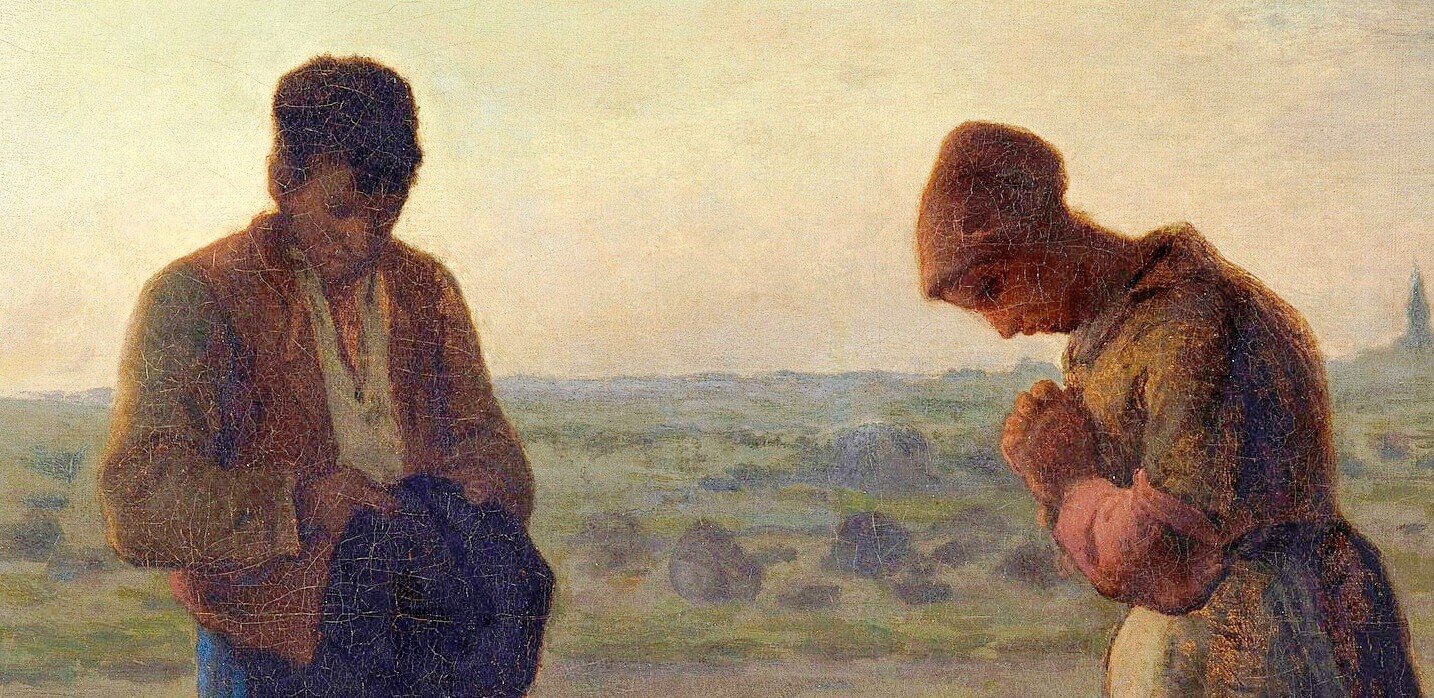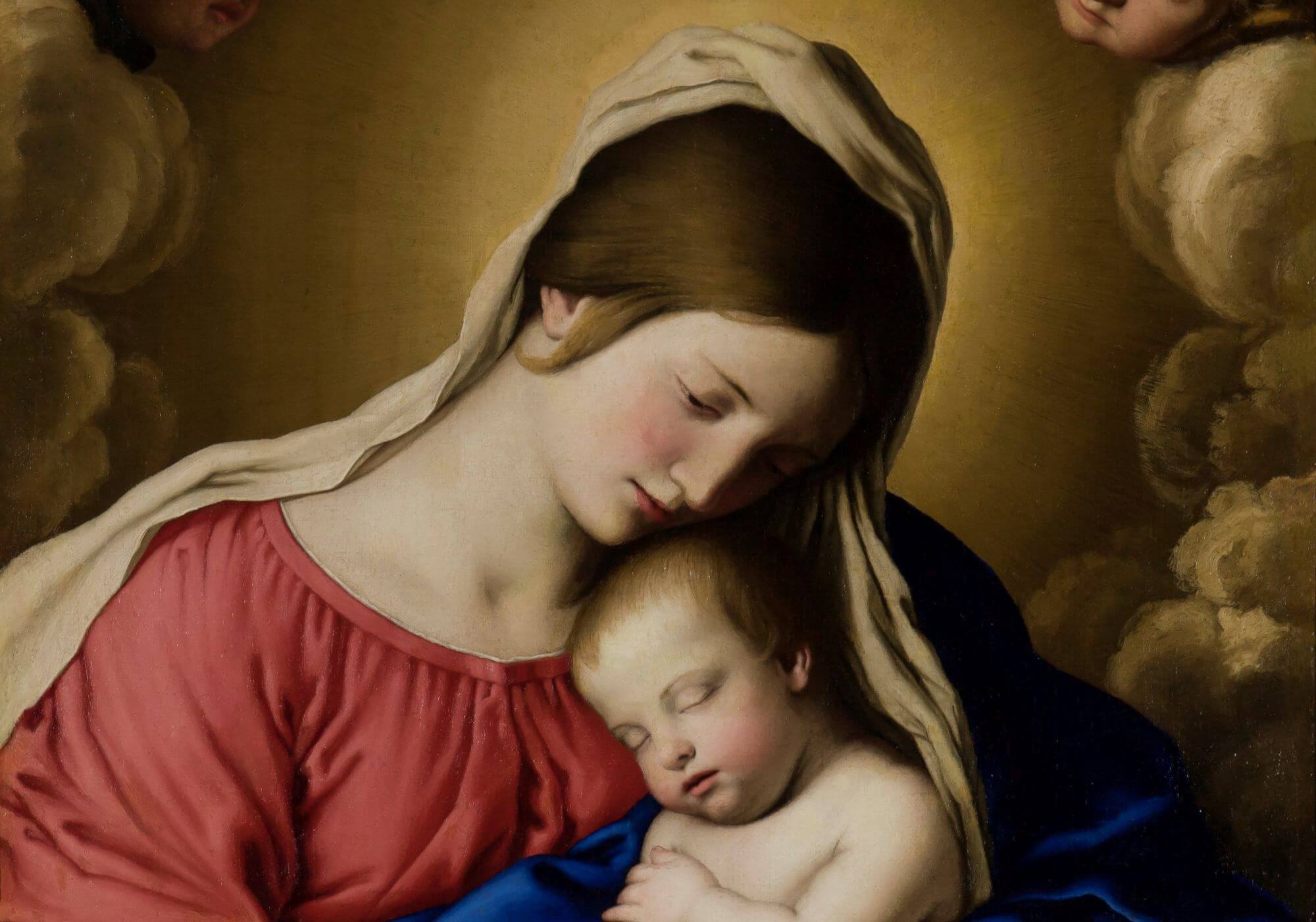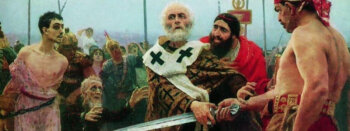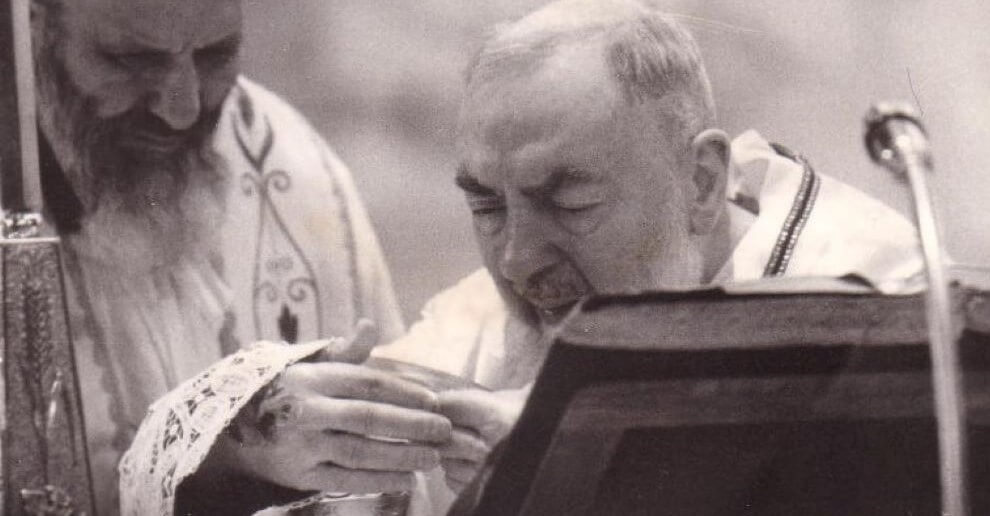
Chances are you’ve seen this famous painting.
It’s called L’Angelus (The Angelus) and was painted by Jean-François Millet in the mid-19th century.
It depicts a peasant couple in a potato field, farm tools set aside, their heads bent in prayer.

In the midst of a physically-demanding work day, this man and woman are taking time to pause, direct their thoughts to God, and humbly receive His grace.
The name of the prayer they’re saying is the painting’s title: the Angelus.
The Angelus Prayer
So, what is the Angelus?
It’s a set of three antiphons that reflect on the Incarnation of Christ at the Annunciation—that profoundly holy moment in which the Angel Gabriel announced God’s invitation for Mary to be the mother of the Messiah, and she said yes.
That’s how the Angelus prayer got its name: the prayer was originally said in Latin, of course, and the word angelus is Latin for angel:
From the first word of the three versicles, i.e. Angelus Domini nuntiavit Mariæ (The angel of the Lord declared unto Mary), the devotion derives its name.
The Catholic Encyclopedia
Each of the Angelus’s antiphons are taken from Sacred Scripture. Each is followed by a Hail Mary.
When the Angelus is prayed by more than one person, a leader says the first part, with everyone else reciting the responses.
Here is the complete Angelus:
V. The Angel of the Lord declared unto Mary.
R. And she conceived of the Holy Spirit.
Hail Mary…
V. Behold the handmaid of the Lord.
R. Be it done unto me according to thy word.
Hail Mary. . .
V. And the Word was made flesh.
R. And dwelt among us.
Hail Mary. . .
V. Pray for us, O holy Mother of God.
R. That we may be made worthy of the promises of Christ.
Let us pray:
Pour forth, we beseech Thee, O Lord, Thy grace into our hearts, that we to whom the Incarnation of Christ Thy Son was made known by the message of an angel, may by His Passion and Cross be brought to the glory of His Resurrection. Through the same Christ Our Lord. Amen.
The History of the Angelus
The exact story of how the Angelus became a common prayer is difficult to parse, but it has a long history.
“A review of Church history shows that this devotion did not appear suddenly, but developed over several centuries,” says D.D. Emmons, writer at Our Sunday Visitor. “Most Church historians agree that the Angelus can be traced back to 11th-century Italy, where monks said three Hail Marys during night prayers, at the last bell of the day.”
An entry for the “Angelus” in the Catholic Encyclopedia indicates that, as early as the 14th century, it was common practice for Europeans to pray three Hail Marys in the evening.
According to a brief history on the origin of the Angelus provided by the University of Dayton, “From early on, [The Angelus] was said for peace and safety.” This university article notes that as early as the mid-13th century, the Franciscans in Assisi followed night prayer (compline) with a Hail Mary and the ringing of bells.
The history of the Angelus is by no means easy to trace with confidence, and it is well to distinguish in this matter between what is certain and what is in some measure conjectural. In the first place it is certain that the Angelus at midday and in the morning were of later introduction than the evening Angelus. Secondly it is certain that the midday Angelus, which is the most recent of the three, was not a mere development or imitation of the morning and evening devotion. Thirdly, there can be no doubt that the practice of saying three Hail Marys in the evening somewhere about sunset had become general throughout Europe in the first half of the fourteenth century and that it was recommended and indulgenced by Pope John XXII in 1318 and 1327.
The Catholic Encyclopedia
The theme throughout this prayer’s history and usage is the number three. There are three antiphons, three Hail Marys, and the prayer has been traditionally said three times a day: in the morning (usually 6 AM), at noon, and in the evening (usually 6 PM).
Of course, no one who wants to pray the Angelus is required to say it three times a day.
Many people pray it once a day—often at the noon hour. Noon is the hour at which Catholics particularly reflect upon Our Lord’s passion, since Jesus mounted the cross at noon on Good Friday.
When I was an undergrad, for example, the Angelus was prayed before noon Mass. The recitation of this prayer helped us prepare our hearts and minds for the mystery of our Eucharistic Lord that was about to unfold in the sacred liturgy.
The Graces of The Angelus
If we are devoted to the pious recitation of the Angelus, graces will come from it.
We are told that the saints had a great devotion to this prayer—and if there’s something simple done by the saints that we can do, it’s likely we can grow in holiness by paying attention to it and implementing it!
Numberless are the saints who were born or who died, by the providence of God, “as the Angelus was sounding” from the town bell or from local Church and monastery steeples. Thus was a holy future often prophesied, or a life of heroic sanctity confirmed, by Him who is pleased to reveal, as He sees fit, those souls whose lives further the effect of that Incarnation so admirably honored in the Angelus.
There is not a saint to be named, of recent centuries, who did not claim devotion to the Angelus. To name but one, Saint Germaine Cousin. The little shepherdess of Pibrac in France, would drop to her knees in prayer upon hearing the Angelus ring—even while crossing a stream.
And the bells themselves are greatly reverenced. Many are preserved, even from before the Middle Ages, and the greater number bear inscriptions, usually in Latin, that indicate their holy employment. Often in France they read Ave Maria, and many in England honor Saint Gabriel—for example: “I am sweet as honey, and am called Gabriel’s bell,” and “Gabriel the messenger bears joyous tidings to holy Mary.”
Sister Helena Maria, M.I.C.M., “Origin of the Angelus”
The Popes and the Angelus
Starting in 1964, popes have prayed a weekly Angelus prayer in St. Peter’s Square.
Pope Francis currently prays it at noon on Sundays and holy days when he is at the Vatican. As did his predecessors, Popes John Paul II and Pope Benedict XVI, he begins with a Gospel reflection. After praying the Angelus, he speaks to Catholics near and far, greeting various groups in the square, and expressing his solidarity with and prayers for both those undergoing suffering and those celebrating special moments.
The tradition of the midday Angelus, too, is quite old. The University of Dayton notes that, by the mid-15th century, “Pope Callistus III prescribed the daily ringing of the bells at midday with the prayer of the three Hail Marys.”
In 1475,
Pope Sixtus IV grant[ed] an indulgence for praying the midday Angelus. From this point forward, the triple ringing of the bells can be heard throughout the West at morning, midday, and evening.
The Angelus Prayer
This tradition—this call to prayer three times a day—helps contextualize the painting we looked at earlier.
Millet’s painting signals that the peasants’ have heard the sound of a nearby church bell, stopped their work, and are responding to that “call to prayer” with great piety.
We, too, should turn to God throughout our day.
Consider setting an alarm on your phone, or taking the first five minutes of your lunch break to make time for this simple prayer. It takes less than three minutes to say and infuses a moment of recollection into our daily routine.
The Angelus is a pearl of our faith: it reminds us that the Word was made Flesh, that divinity humbled itself to embrace humanity, that the humble yes of Our Lady to God’s invitation resounds throughout history.
Think about the beautiful closing prayer of the Angelus, which says,
“Pour forth we beseech thee, O Lord, thy grace into our hearts…”
This prayer offers God an opening in our day, a place where He can enter, rest, and pour forth His grace.
May we be present to receive Him and the graces He desires to give.
Do you pray the Angelus? Would you commit to praying it daily?
Which devotions have brought unexpected graces into your life?
What other Catholic traditions would you like to know the history of?
Share your thoughts with us in the comment section below!





